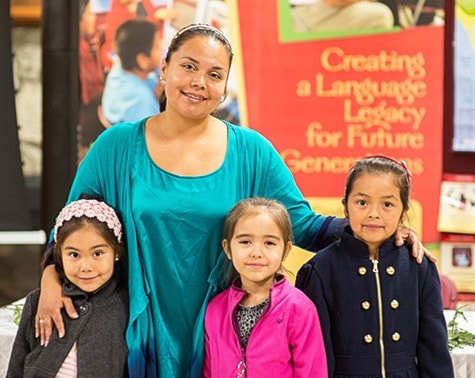According to Dr. Lorna Williams, the Chair of the First People Cultural Council, there are approximately 60 First Nations languages spoken in Canada.
Of those, 34 can be found in British Columbia, but the number of people who can actually speak those languages has, in the past, been severely endangered.
That’s why a recent announcement that the decline in the aging population of fluent speakers has been largely offset by an increase in semi-fluent speakers in the younger generations comes as welcome news.
The announcement stems from the completion of a multiyear study by the First Nations Cultural Council.
“Language is an important part of our history, but also our future,” said Williams.
“This study shows that we have more work to do to revitalize our languages in the province but that our efforts so far are helping us have some success.”
Those efforts include some decidedly modern approaches.
“If you look at our website (firstvoices.com) you can see some of the tremendous work we’ve done in collecting and archiving the languages,” said Williams. “We’ve created dictionaries and we even have thirteen apps for smartphones that allow users to access those dictionaries and help them to find the words that they’re looking for.”
The efforts to preserve the languages also include the development of a special computer keyboard that allows the languages to be typed.
“There are sounds that don’t exist in European languages,” said Williams. “So we had to make some modifications from the Roman alphabet to allow those words to be recorded.”
Williams explained that there was no indigenous alphabet as the languages in play were largely passed along through oral tradition.
That oral tradition made the languages extremely vulnerable, particularly in the wake of events like the Residential School Program during the 20th century.
Renee Sampson, a recent graduate of a Masters program in Indigenous Languages, is only too familiar with the damage that was done to native languages during that period.
She did not speak her indigenous language up until the age of 22. That’s when she decided that she wanted her daughter to learn the language of her people and began to learn the language herself so that she could pass it on.
“All my grandparents went to residential school and the language was drummed out of them. My parents never spoke it as a result and I never learned it at all,” said Sampson.
“But it’s the language of my people,” she said. “It’s the language of the land, the songs, the stories ... they can only be kept alive if the language is brought back to life.”
Ten years after beginning to learn her language Sampson has graduated from university and is determined to pass along what she has learned.
That’s why Sampson has begun work as a SENCOTEN immersion kindergarten teacher. SENCOTEN is one of the Coast Salish languages that are very threatened by the loss of fluent speakers of the dialect.
“If we don’t work at this,” said Sampson, “it could be gone ... like that.”
According to Williams, the preservation of the First People’s languages is more than just an academic exercise.
“Language is culture,” she said. “We now have people rediscovering their culture, their pride. They are using their language in ceremonies and it makes a great difference.”
“In the end, our languages came from the land,” said Williams. “People name their environment, and express who and what they are through language. That’s what our people did and that’s why it’s so precious. It’s why it has to be preserved.”
— Tim Collins/News Contributor
